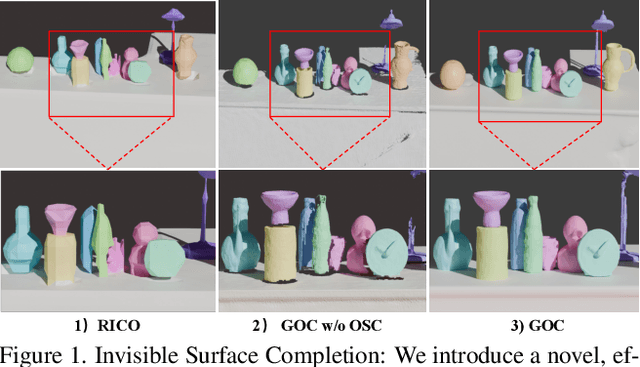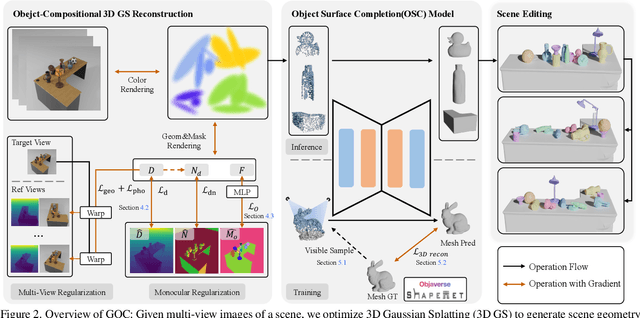Tianwei Lin
Heartcare Suite: Multi-dimensional Understanding of ECG with Raw Multi-lead Signal Modeling
Jun 06, 2025Abstract:We present Heartcare Suite, a multimodal comprehensive framework for finegrained electrocardiogram (ECG) understanding. It comprises three key components: (i) Heartcare-220K, a high-quality, structured, and comprehensive multimodal ECG dataset covering essential tasks such as disease diagnosis, waveform morphology analysis, and rhythm interpretation. (ii) Heartcare-Bench, a systematic and multi-dimensional benchmark designed to evaluate diagnostic intelligence and guide the optimization of Medical Multimodal Large Language Models (Med-MLLMs) in ECG scenarios. and (iii) HeartcareGPT with a tailored tokenizer Bidirectional ECG Abstract Tokenization (Beat), which compresses raw multi-lead signals into semantically rich discrete tokens via duallevel vector quantization and query-guided bidirectional diffusion mechanism. Built upon Heartcare-220K, HeartcareGPT achieves strong generalization and SoTA performance across multiple clinically meaningful tasks. Extensive experiments demonstrate that Heartcare Suite is highly effective in advancing ECGspecific multimodal understanding and evaluation. Our project is available at https://github.com/Wznnnnn/Heartcare-Suite .
MoA: Heterogeneous Mixture of Adapters for Parameter-Efficient Fine-Tuning of Large Language Models
Jun 06, 2025Abstract:Recent studies integrate Low-Rank Adaptation (LoRA) and Mixture-of-Experts (MoE) to further enhance the performance of parameter-efficient fine-tuning (PEFT) methods in Large Language Model (LLM) applications. Existing methods employ \emph{homogeneous} MoE-LoRA architectures composed of LoRA experts with either similar or identical structures and capacities. However, these approaches often suffer from representation collapse and expert load imbalance, which negatively impact the potential of LLMs. To address these challenges, we propose a \emph{heterogeneous} \textbf{Mixture-of-Adapters (MoA)} approach. This method dynamically integrates PEFT adapter experts with diverse structures, leveraging their complementary representational capabilities to foster expert specialization, thereby enhancing the effective transfer of pre-trained knowledge to downstream tasks. MoA supports two variants: \textbf{(i)} \textit{Soft MoA} achieves fine-grained integration by performing a weighted fusion of all expert outputs; \textbf{(ii)} \textit{Sparse MoA} activates adapter experts sparsely based on their contribution, achieving this with negligible performance degradation. Experimental results demonstrate that heterogeneous MoA outperforms homogeneous MoE-LoRA methods in both performance and parameter efficiency. Our project is available at https://github.com/DCDmllm/MoA.
SEM: Enhancing Spatial Understanding for Robust Robot Manipulation
May 22, 2025Abstract:A key challenge in robot manipulation lies in developing policy models with strong spatial understanding, the ability to reason about 3D geometry, object relations, and robot embodiment. Existing methods often fall short: 3D point cloud models lack semantic abstraction, while 2D image encoders struggle with spatial reasoning. To address this, we propose SEM (Spatial Enhanced Manipulation model), a novel diffusion-based policy framework that explicitly enhances spatial understanding from two complementary perspectives. A spatial enhancer augments visual representations with 3D geometric context, while a robot state encoder captures embodiment-aware structure through graphbased modeling of joint dependencies. By integrating these modules, SEM significantly improves spatial understanding, leading to robust and generalizable manipulation across diverse tasks that outperform existing baselines.
EyecareGPT: Boosting Comprehensive Ophthalmology Understanding with Tailored Dataset, Benchmark and Model
Apr 18, 2025Abstract:Medical Large Vision-Language Models (Med-LVLMs) demonstrate significant potential in healthcare, but their reliance on general medical data and coarse-grained global visual understanding limits them in intelligent ophthalmic diagnosis. Currently, intelligent ophthalmic diagnosis faces three major challenges: (i) Data. The lack of deeply annotated, high-quality, multi-modal ophthalmic visual instruction data; (ii) Benchmark. The absence of a comprehensive and systematic benchmark for evaluating diagnostic performance; (iii) Model. The difficulty of adapting holistic visual architectures to fine-grained, region-specific ophthalmic lesion identification. In this paper, we propose the Eyecare Kit, which systematically tackles the aforementioned three key challenges with the tailored dataset, benchmark and model: First, we construct a multi-agent data engine with real-life ophthalmology data to produce Eyecare-100K, a high-quality ophthalmic visual instruction dataset. Subsequently, we design Eyecare-Bench, a benchmark that comprehensively evaluates the overall performance of LVLMs on intelligent ophthalmic diagnosis tasks across multiple dimensions. Finally, we develop the EyecareGPT, optimized for fine-grained ophthalmic visual understanding thoroughly, which incorporates an adaptive resolution mechanism and a layer-wise dense connector. Extensive experimental results indicate that the EyecareGPT achieves state-of-the-art performance in a range of ophthalmic tasks, underscoring its significant potential for the advancement of open research in intelligent ophthalmic diagnosis. Our project is available at https://github.com/DCDmllm/EyecareGPT.
Generating Multimodal Driving Scenes via Next-Scene Prediction
Mar 19, 2025Abstract:Generative models in Autonomous Driving (AD) enable diverse scene creation, yet existing methods fall short by only capturing a limited range of modalities, restricting the capability of generating controllable scenes for comprehensive evaluation of AD systems. In this paper, we introduce a multimodal generation framework that incorporates four major data modalities, including a novel addition of map modality. With tokenized modalities, our scene sequence generation framework autoregressively predicts each scene while managing computational demands through a two-stage approach. The Temporal AutoRegressive (TAR) component captures inter-frame dynamics for each modality while the Ordered AutoRegressive (OAR) component aligns modalities within each scene by sequentially predicting tokens in a fixed order. To maintain coherence between map and ego-action modalities, we introduce the Action-aware Map Alignment (AMA) module, which applies a transformation based on the ego-action to maintain coherence between these modalities. Our framework effectively generates complex, realistic driving scenes over extended sequences, ensuring multimodal consistency and offering fine-grained control over scene elements.
Boosting Private Domain Understanding of Efficient MLLMs: A Tuning-free, Adaptive, Universal Prompt Optimization Framework
Dec 27, 2024Abstract:Efficient multimodal large language models (EMLLMs), in contrast to multimodal large language models (MLLMs), reduce model size and computational costs and are often deployed on resource-constrained devices. However, due to data privacy concerns, existing open-source EMLLMs rarely have access to private domain-specific data during the pre-training process, making them difficult to directly apply in device-specific domains, such as certain business scenarios. To address this weakness, this paper focuses on the efficient adaptation of EMLLMs to private domains, specifically in two areas: 1) how to reduce data requirements, and 2) how to avoid parameter fine-tuning. Specifically, we propose a tun\textbf{\underline{I}}ng-free, a\textbf{\underline{D}}aptiv\textbf{\underline{E}}, univers\textbf{\underline{AL}} \textbf{\underline{Prompt}} Optimization Framework, abbreviated as \textit{\textbf{\ourmethod{}}} which consists of two stages: 1) Predefined Prompt, based on the reinforcement searching strategy, generate a prompt optimization strategy tree to acquire optimization priors; 2) Prompt Reflection initializes the prompt based on optimization priors, followed by self-reflection to further search and refine the prompt. By doing so, \ourmethod{} elegantly generates the ``ideal prompts'' for processing private domain-specific data. Note that our method requires no parameter fine-tuning and only a small amount of data to quickly adapt to the data distribution of private data. Extensive experiments across multiple tasks demonstrate that our proposed \ourmethod{} significantly improves both efficiency and performance compared to baselines.
GaussTR: Foundation Model-Aligned Gaussian Transformer for Self-Supervised 3D Spatial Understanding
Dec 17, 2024Abstract:3D Semantic Occupancy Prediction is fundamental for spatial understanding as it provides a comprehensive semantic cognition of surrounding environments. However, prevalent approaches primarily rely on extensive labeled data and computationally intensive voxel-based modeling, restricting the scalability and generalizability of 3D representation learning. In this paper, we introduce GaussTR, a novel Gaussian Transformer that leverages alignment with foundation models to advance self-supervised 3D spatial understanding. GaussTR adopts a Transformer architecture to predict sparse sets of 3D Gaussians that represent scenes in a feed-forward manner. Through aligning rendered Gaussian features with diverse knowledge from pre-trained foundation models, GaussTR facilitates the learning of versatile 3D representations and enables open-vocabulary occupancy prediction without explicit annotations. Empirical evaluations on the Occ3D-nuScenes dataset showcase GaussTR's state-of-the-art zero-shot performance, achieving 11.70 mIoU while reducing training duration by approximately 50%. These experimental results highlight the significant potential of GaussTR for scalable and holistic 3D spatial understanding, with promising implications for autonomous driving and embodied agents. Code is available at https://github.com/hustvl/GaussTR.
Gaussian Object Carver: Object-Compositional Gaussian Splatting with surfaces completion
Dec 03, 2024



Abstract:3D scene reconstruction is a foundational problem in computer vision. Despite recent advancements in Neural Implicit Representations (NIR), existing methods often lack editability and compositional flexibility, limiting their use in scenarios requiring high interactivity and object-level manipulation. In this paper, we introduce the Gaussian Object Carver (GOC), a novel, efficient, and scalable framework for object-compositional 3D scene reconstruction. GOC leverages 3D Gaussian Splatting (GS), enriched with monocular geometry priors and multi-view geometry regularization, to achieve high-quality and flexible reconstruction. Furthermore, we propose a zero-shot Object Surface Completion (OSC) model, which uses 3D priors from 3d object data to reconstruct unobserved surfaces, ensuring object completeness even in occluded areas. Experimental results demonstrate that GOC improves reconstruction efficiency and geometric fidelity. It holds promise for advancing the practical application of digital twins in embodied AI, AR/VR, and interactive simulation environments.
GLS: Geometry-aware 3D Language Gaussian Splatting
Nov 27, 2024



Abstract:Recently, 3D Gaussian Splatting (3DGS) has achieved significant performance on indoor surface reconstruction and open-vocabulary segmentation. This paper presents GLS, a unified framework of surface reconstruction and open-vocabulary segmentation based on 3DGS. GLS extends two fields by exploring the correlation between them. For indoor surface reconstruction, we introduce surface normal prior as a geometric cue to guide the rendered normal, and use the normal error to optimize the rendered depth. For open-vocabulary segmentation, we employ 2D CLIP features to guide instance features and utilize DEVA masks to enhance their view consistency. Extensive experiments demonstrate the effectiveness of jointly optimizing surface reconstruction and open-vocabulary segmentation, where GLS surpasses state-of-the-art approaches of each task on MuSHRoom, ScanNet++, and LERF-OVS datasets. Code will be available at https://github.com/JiaxiongQ/GLS.
BIP3D: Bridging 2D Images and 3D Perception for Embodied Intelligence
Nov 22, 2024



Abstract:In embodied intelligence systems, a key component is 3D perception algorithm, which enables agents to understand their surrounding environments. Previous algorithms primarily rely on point cloud, which, despite offering precise geometric information, still constrain perception performance due to inherent sparsity, noise, and data scarcity. In this work, we introduce a novel image-centric 3D perception model, BIP3D, which leverages expressive image features with explicit 3D position encoding to overcome the limitations of point-centric methods. Specifically, we leverage pre-trained 2D vision foundation models to enhance semantic understanding, and introduce a spatial enhancer module to improve spatial understanding. Together, these modules enable BIP3D to achieve multi-view, multi-modal feature fusion and end-to-end 3D perception. In our experiments, BIP3D outperforms current state-of-the-art results on the EmbodiedScan benchmark, achieving improvements of 5.69% in the 3D detection task and 15.25% in the 3D visual grounding task.
 Add to Chrome
Add to Chrome Add to Firefox
Add to Firefox Add to Edge
Add to Edge